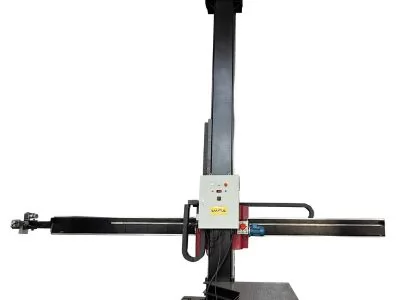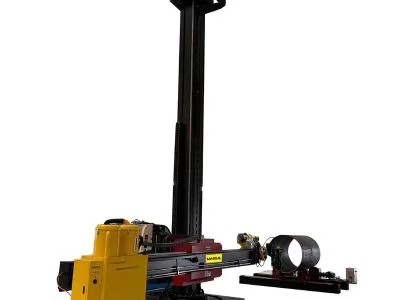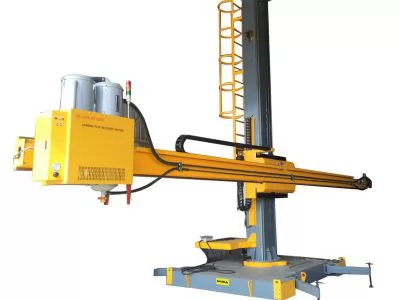


.png)
.png)
.png)


If you’ve ever wondered how large metal structures like ships, pipelines, or industrial machinery are welded with precision and efficiency, the answer often lies in a tool called a welding manipulator. But what exactly is a welding manipulator, and why is it so important in modern manufacturing? In this guide, we’ll break it down for you in simple terms. Whether you’re new to welding or exploring equipment options, you’ll learn everything from how a welding manipulator works to its benefits and uses. At MISA, we specialize in advanced welding solutions, and we’re here to help you understand this game-changing tool.
A welding manipulator is a piece of equipment designed to hold, position, and move a welding torch or head during the welding process. Think of it as a robotic assistant that ensures the welder can focus on creating strong, clean welds without struggling to reach awkward angles or heights. It typically consists of a sturdy base, a movable arm, and a mounting system for the welding torch.
In simpler terms, a welding manipulator takes the hard work out of positioning the welding tool, especially for large or complex projects. It’s widely used in industries like manufacturing, construction, and shipbuilding, where precision and consistency are critical. Companies like MISA design these tools to meet the needs of professionals looking to improve their welding efficiency.
The basic idea behind a welding manipulator is to automate and control the movement of the welding torch. The manipulator’s arm can rotate, tilt, or extend, depending on the design. Operators control it manually or through automated systems, adjusting its position to align perfectly with the workpiece—the material being welded.
For example, imagine welding a long seam on a steel pipe. Without a manipulator, a welder would need to climb ladders or constantly reposition themselves. With a welding manipulator, the torch moves smoothly along the seam while the welder monitors the process from a safe, comfortable spot. This combination of precision and ease is why welding manipulators are so valuable.
Not all welding manipulators are the same. Depending on your project, you might need a specific type. Here are the most common types of welding manipulators you’ll encounter:
The most popular type, column and boom manipulators, feature a vertical column and a horizontal boom (arm). The boom can move up and down the column and extend outward, making it ideal for welding tall or wide structures like pressure vessels or storage tanks.




The welding manipulator uses are vast, spanning multiple industries. Here’s a look at where you’ll find these tools in action:
For instance, picture a shipyard worker tasked with welding a massive steel plate. A welding manipulator allows them to complete the job faster and with fewer errors, saving time and reducing material waste.
So, why invest in a welding manipulator? The welding manipulator benefits go beyond convenience. Here’s what you gain:
By automating torch movement, a welding manipulator speeds up the welding process. What might take hours by hand can be done in minutes, especially on repetitive tasks.
Consistency is key in welding. A manipulator ensures the torch stays at the right angle and distance, reducing defects and rework.
Welding involves heat, sparks, and fumes. With a manipulator, welders can operate from a safer distance, minimizing risks.
While the upfront cost might seem high, the long-term savings from faster work, fewer mistakes, and less labor make it worthwhile.
At MISA, we’ve seen firsthand how our welding manipulators transform workflows for businesses, delivering measurable results in productivity and quality.
With so many options, picking the right welding manipulator can feel overwhelming. Here’s a simple guide to help you decide:
For example, a small fabrication shop might opt for a cantilever manipulator to save space, while a shipyard would benefit from a heavy-duty column and boom system. Matching the tool to the job is key.
A welding manipulator is more than just a tool—it’s a solution that boosts efficiency, precision, and safety in welding projects of all sizes. Whether you’re welding pipelines, building ships, or assembling machinery, this equipment can make a world of difference. From understanding its types and uses to appreciating its benefits, you now have a solid grasp of what a welding manipulator can do.
Ready to take your welding to the next level? Visit MISA today to explore our range of welding manipulators and find the perfect solution for your business. Our experts are here to help you every step of the way—because at MISA, we’re committed to making your work stronger, faster, and smarter.


